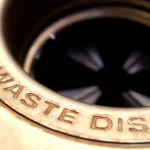Some Toronto residents had cars to recover from the flooded Don Valley Parkway on Tuesday morning; others had basement flooding to deal with, and as far afield as Mississauga up to 70,000 homes had no power. All this was a result of a record-breaking storm on Monday evening, which saw Pearson International Airport report 126 millimeters of rain. This broke the City’s previous record for rainfall in a single day set by hurricane Hazel with 121 millimeters of rain in October 1954.
The Insurance Bureau of Canada says the cost of the flood damage is likely to exceed $600 million. If your home is one of the affected properties, what should you do next? Here are some steps to follow:
Step #1: Report Basement Flooding Problems
The first step is to report it to the City of Toronto. Call the 311 call center immediately you notice the problem. The call center is available 24/7 and you can arrange for City staff to
- come and inspect the basement,
- assess the severity of the problem, and
- try to identify the source.
These steps are important; there’s no point in embarking on a major clean-up effort and renewed basement waterproofing if the City’s stormwater drains are faulty because you’ll only experience the same issue again in the future.
Step #2 Get Emergency Clean-Up Services
Call your local Toronto plumbers and get someone out to check if you need any emergency work done. With more rain ahead in the next few days, it’s important to plug any gaps through which water is entering, or the problem will simply get worse. Also, depending on where the floodwater is coming from, you and your family could be at risk of contaminating your drinking water or contracting diseases from bacteria in the water.
Step #3: Record the Damage
Take photos of the damage caused by the flooding as early as possible, before the water subsides. You may need this to support your insurance claim, and it’s ideal if you can show evidence of the problem at its worst.
Save the receipts from any emergency repair or clean-up work that you need to do to contain the problem, so you can submit these to the City or your insurance company afterward.
Step #4: Determine Responsibility
If the main cause of basement flooding was due to blocked pipes, leaking foundation or poor drainage on your lot, you (and your insurance policy!) are responsible for the repairs needed. However, if the City assessors believe that the public infrastructure was at fault, you can submit your claim in writing to the City at:
City Clerk’s Office, City of Toronto
City Hall, 100 Queen St. W.
Toronto, ON M5H 2N2
Or fax: 416-392-2980 or e-mail clerk@toronto.ca.
The City will send you a letter of acknowledgment and forward your claim to its insurance adjustors for evaluation.
Step #5: Schedule an Inspection
If you were lucky enough to escape this time around, it’s never too early to schedule an inspection of your basement waterproofing by qualified Toronto plumbers. Monday’s storm is unlikely to be the last we’ll see this year, given that there’s an active hurricane season in progress across North America. If you experience flooding and inspectors find that your preventive measures were inadequate, you could be held responsible for the repairs or have a high increase in your insurance premiums.
Step #6: Implement Adequate Protection Against Future Basement Flooding
After a thorough inspection, your plumber will be able to advise whether you need a sump pump installation with a battery backup to depend on in the case of future floods or a power outage. In addition, a functioning backwater valve will stop potentially contaminated water flowing back into your home from the City sewers. You can also investigate the possibility of pipe severance and capping, which severs the link between weeping tile systems to the sewers and caps the connection pipes. This will prevent the sump pump from being overwhelmed by a huge backflow of water.
Take steps now to ensure that you’re ready for the next heavy rains.






